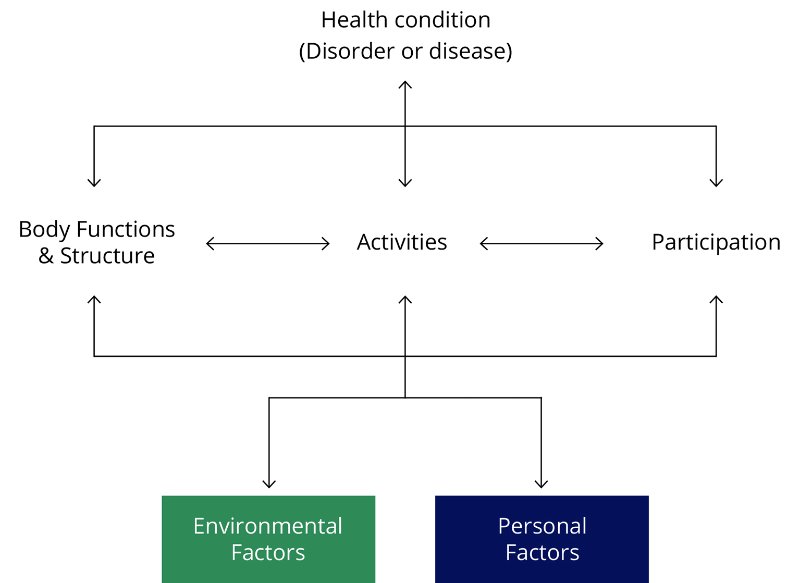Defining disability
In Australia, many data collections identify disability based on concepts from the World Health Organization's (WHO) International Classification of Functioning, Disability and Health (ICF).
The ICF conceptualises a person's level of functioning, in terms of body functions and structures, activities and participation, as a dynamic interaction between their health condition(s) and environmental and/or personal factors (Figure ABOUT.2; WHO 2002). Disability is an umbrella term for impairments of body function or structure, activity limitations or participation restrictions.
Figure ABOUT.2: International Classification of Functioning, Disability and Health

Source: Modified from WHO 2002.
People experience different degrees of impairment, activity limitation and participation restriction. Disability can be related to genetic disorders, illnesses, accidents, ageing, injuries or a combination of these factors. Importantly, how people experience disability is affected by environmental factors – including community attitudes and the opportunities, services and assistance they can access – as well as by personal factors.
The definition and identification of disability used in each collection can vary, depending on the collection's type and purpose. For example:
- the Australian Bureau of Statistics' (ABS) Survey of Disability, Ageing and Carers (SDAC) uses a comprehensive set of questions to determine disability and is considered the gold standard of disability identification in Australia
- other ABS surveys, such as the National Health Survey, use a shorter set of questions to identify disability (the Short Disability Module)
- the NDIS bases eligibility on a narrower concept of disability in terms of people who have a significant impairment to their functional capacity
- some data collections, such as on hospital admissions, do not identify disability at all.
Those data collections which identify disability may also identify different sub-groups of disability, such as type (e.g., sensory, physical, or psychosocial) and level of disability (based on level of restriction, difficulty, or need for aids or assistance a person with disability has – also sometimes called severity of disability). This report uses the definitions of disability groups as available in each data source (links to relevant resources are provided in ‘Definitions of disability used in this report’).
The incomplete and inconsistent identification of people with disability across data sources presents challenges to our understanding of disability, including the extent to which people with disability interact with mainstream and other services (see ‘Key data gaps’).
Definitions of disability used in this report
This report uses more than 25 sources of data on people with disability. The definition of disability and the population scope for each of these data sources is presented in Data table: Definitions of disability (available from ‘Data tables’). The most robust method is used by the ABS SDAC. The SDAC is a large survey designed to measure the entire spectrum of disability and has the most comprehensive measure. Disability identification and severity is established through more than 120 questions, progressing through a number of steps to first identify whether a person has disability and then, the level or severity of the disability.
The ‘Data sources’ section of this report also provides additional information on definitions of disability and disability groups in the data sources used in this report.
WHO (World Health Organization) (2002) Towards a common language for functioning, disability, and health: ICF. The International Classification of Functioning, Disability and Health, WHO, accessed 9 May 2022.


